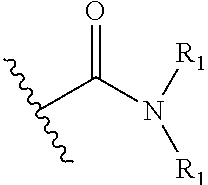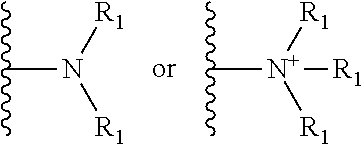Securinine and norsecurinine analogue compounds for the treatment of myeloid disorders
a technology of myeloid disorders and analogue compounds, which is applied in the field of myeloid disorders, can solve the problems of low overall survival improvement in this age group over the last 30 years, inability to tolerate traditional chemotherapy, and high unmet need, so as to promote differentiation of immature myeloid cells, induce and/or promote differentiation of myeloid cells, and low toxicity
- Summary
- Abstract
- Description
- Claims
- Application Information
AI Technical Summary
Benefits of technology
Problems solved by technology
Method used
Image
Examples
example 1
Identification of Novel Differentiation-Inducing Compounds
[0320]To discover novel AML differentiation-inducing compounds a rapid high-throughput screen (HTS) was developed and optimized. The screen was designed to be biased to identify compounds that, unlike the majority of known differentiation-inducing agents, have both high potency and low toxicity. The screen measured the differentiation of HL-60 leukemic cells using a quantitative Nitroblue Tetrazolium (NBT) reduction assay, a test that is used extensively as a measure of functional myelomonocytic differentiation. The basis for the screen is unreduced NBT exists as a yellow soluble dye. Differentiated leukemic cells are capable of producing a respiratory burst that can reduce NBT into a blue insoluble compound that can be measured spectrophotometrically. This forward chemical genetics approach allowed the discovery of novel compounds that can act on targets not previously known to be “drugable.” As only live cells can reduce NB...
example 2
Identification of Novel Compounds for Inhibiting Cancer Cell Growth
[0324]In certain embodiments, securinine and norsecurinine analogues were administered to cancerous cells, such as acute myeloblastic leukemia cells (e.g., MOLT3 and OCI-AML3) and growth inhibition was analyzed. The analogues were effective in inhibiting myeloid growth in addition to promoting differentiation, and provide for reduced proliferation of acute myeloblastic leukemia cells (Table 2).
[0325]
TABLE 2AnalogueMOLT3 IC50 (nM)OCI-AML3 IC50 (nM)INVS-MG-82-II90100INVS-MG-99B80110INVS-MG-99D1501681770801870902219622026160195281652002960803160753513011036115105398070409010541150180461452054715021548>300>300INVS-MG-136-III100115
PUM
| Property | Measurement | Unit |
|---|---|---|
| temperature | aaaaa | aaaaa |
| stability | aaaaa | aaaaa |
| myeloid disorder | aaaaa | aaaaa |
Abstract
Description
Claims
Application Information
 Login to View More
Login to View More - R&D
- Intellectual Property
- Life Sciences
- Materials
- Tech Scout
- Unparalleled Data Quality
- Higher Quality Content
- 60% Fewer Hallucinations
Browse by: Latest US Patents, China's latest patents, Technical Efficacy Thesaurus, Application Domain, Technology Topic, Popular Technical Reports.
© 2025 PatSnap. All rights reserved.Legal|Privacy policy|Modern Slavery Act Transparency Statement|Sitemap|About US| Contact US: help@patsnap.com



